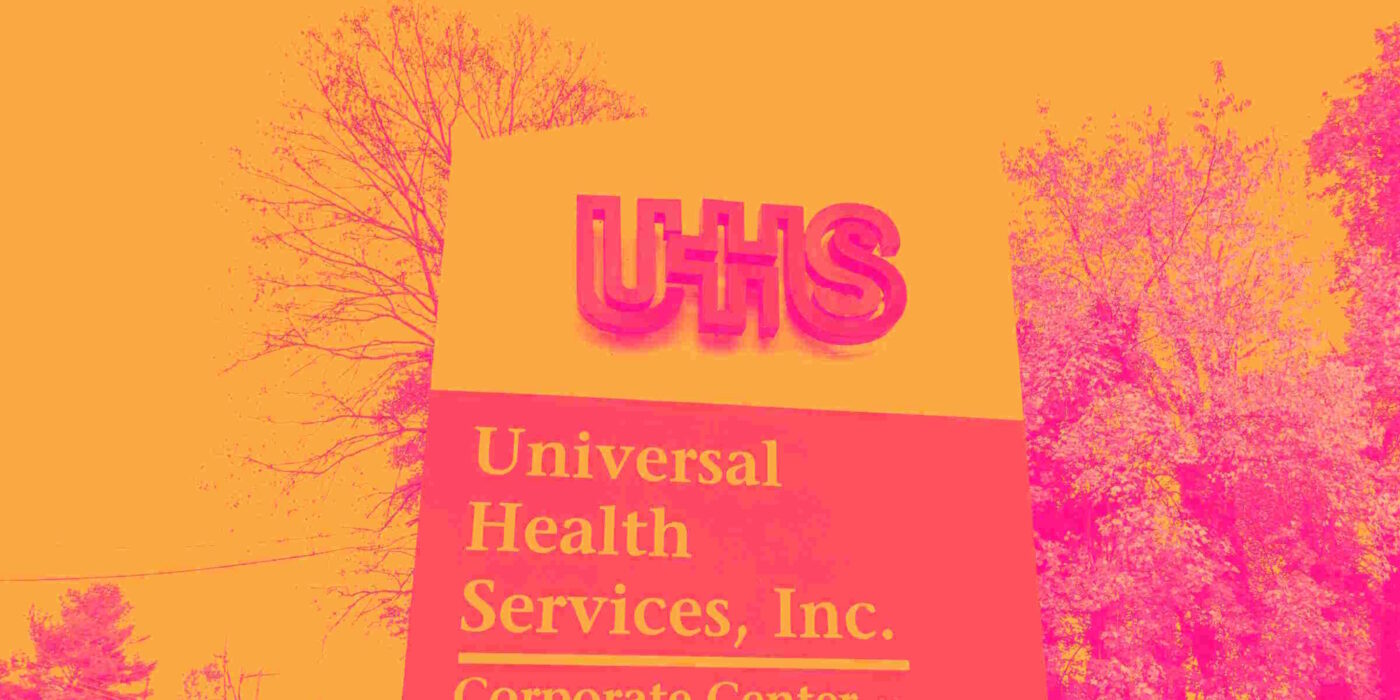
Hospital management company Universal Health Services (NYSE: UHS) reported Q4 CY2024 results exceeding the market’s revenue expectations, with sales up 11.1% year on year to $4.11 billion. The company’s full-year revenue guidance of $17.19 billion at the midpoint came in 2.9% above analysts’ estimates. Its GAAP profit of $4.96 per share was 18.8% above analysts’ consensus estimates.
Is now the time to buy Universal Health Services? Find out by accessing our full research report, it’s free.
Universal Health Services (UHS) Q4 CY2024 Highlights:
- Revenue: $4.11 billion vs analyst estimates of $4.01 billion (11.1% year-on-year growth, 2.6% beat)
- EPS (GAAP): $4.96 vs analyst estimates of $4.17 (18.8% beat)
- Adjusted EBITDA: $619.3 million vs analyst estimates of $570.2 million (15.1% margin, 8.6% beat)
- Management’s revenue guidance for the upcoming financial year 2025 is $17.19 billion at the midpoint, beating analyst estimates by 2.9% and implying 8.6% growth (vs 10.8% in FY2024)
- EPS (GAAP) guidance for the upcoming financial year 2025 is $19.20 at the midpoint, beating analyst estimates by 7.2%
- EBITDA guidance for the upcoming financial year 2025 is $2.42 billion at the midpoint, above analyst estimates of $2.38 billion
- Operating Margin: 11.5%, up from 8.9% in the same quarter last year
- Free Cash Flow Margin: 10%, up from 6.6% in the same quarter last year
- Same-Store Sales rose 2.2% year on year (5.6% in the same quarter last year)
- Market Capitalization: $12.47 billion
Company Overview
Founded in 1979 with just a handful of employees and no hospitals to its name, Universal Health Services (NYSE: UHS) now owns and operates acute care hospitals, behavioral health facilities, and outpatient centers, providing a range of medical and psychiatric services across the United States.
Hospital Chains
Hospital chains operate scale-driven businesses that rely on patient volumes, efficient operations, and favorable payer contracts to drive revenue and profitability. These organizations benefit from the essential nature of their services, which ensures consistent demand, particularly as populations age and chronic diseases become more prevalent. However, profitability can be pressured by rising labor costs, regulatory requirements, and the challenges of balancing care quality with cost efficiency. Dependence on government and private insurance reimbursements also introduces financial uncertainty. Looking ahead, hospital chains stand to benefit from tailwinds such as increasing healthcare utilization driven by an aging population that generally has higher incidents of disease. AI can also be a tailwind in areas such as predictive analytics for more personalized treatment and efficiency (intake, staffing, resourcing allocation). However, the sector faces potential headwinds such as labor shortages that could push up wages as well as substantial investments needs for digital infrastructure to support telehealth and electronic health records. Regulatory scrutiny, and reimbursement cuts are also looming topics that could further strain margins.
Sales Growth
Reviewing a company’s long-term sales performance reveals insights into its quality. Any business can have short-term success, but a top-tier one grows for years. Regrettably, Universal Health Services’s sales grew at a mediocre 6.8% compounded annual growth rate over the last five years. This was below our standard for the healthcare sector and is a tough starting point for our analysis.
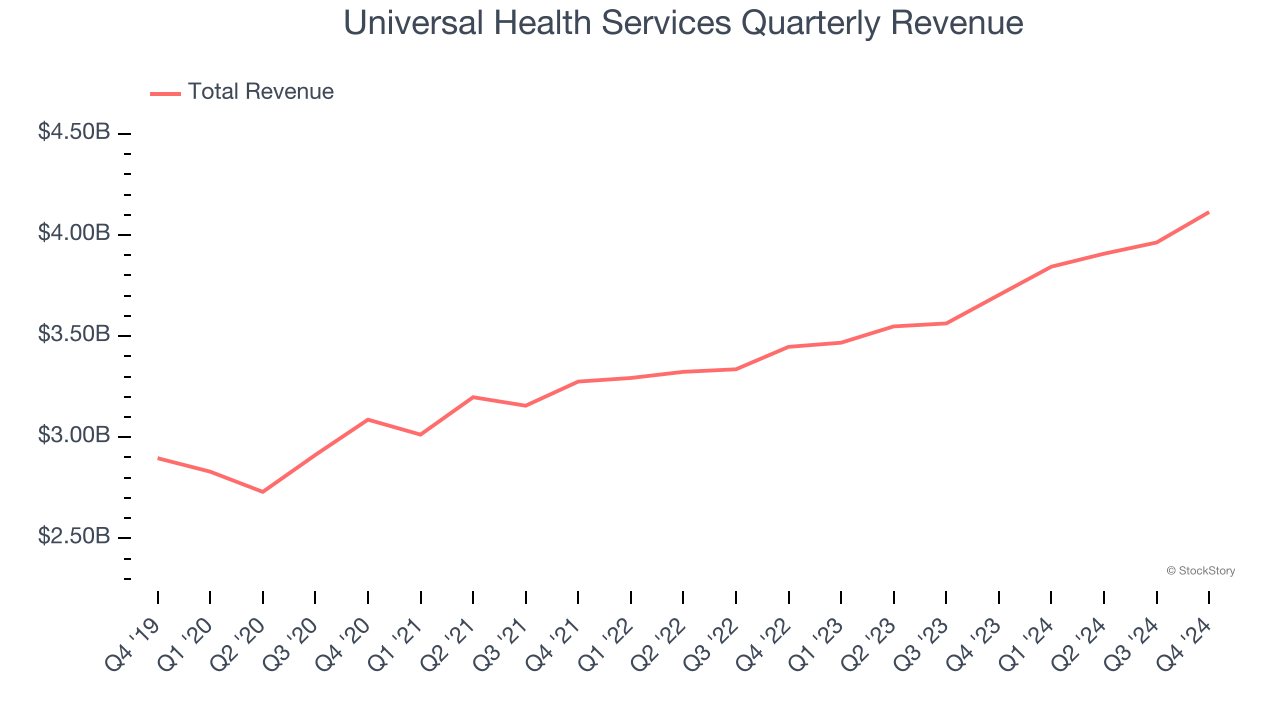
Long-term growth is the most important, but within healthcare, a half-decade historical view may miss new innovations or demand cycles. Universal Health Services’s annualized revenue growth of 8.7% over the last two years is above its five-year trend, suggesting some bright spots. 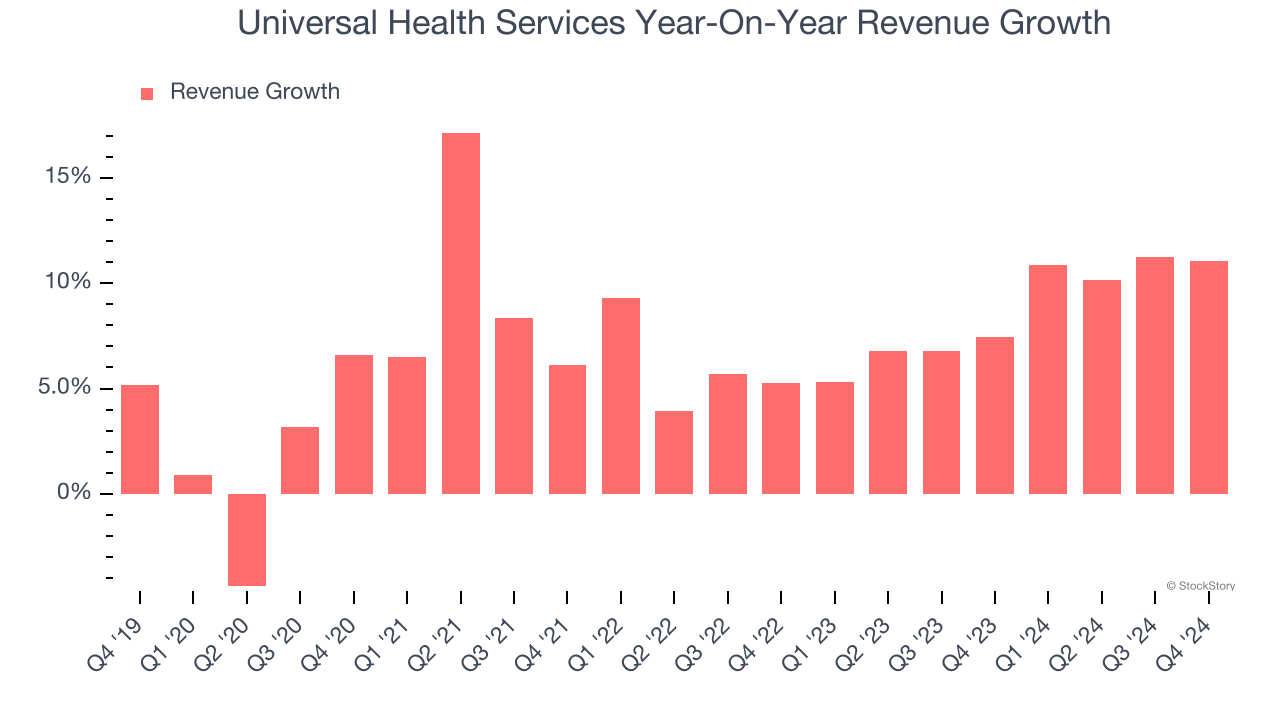
Universal Health Services also reports same-store sales, which show how much revenue its established locations generate. Over the last two years, Universal Health Services’s same-store sales averaged 5.3% year-on-year growth. Because this number is lower than its revenue growth, we can see the opening of new locations is boosting the company’s top-line performance. 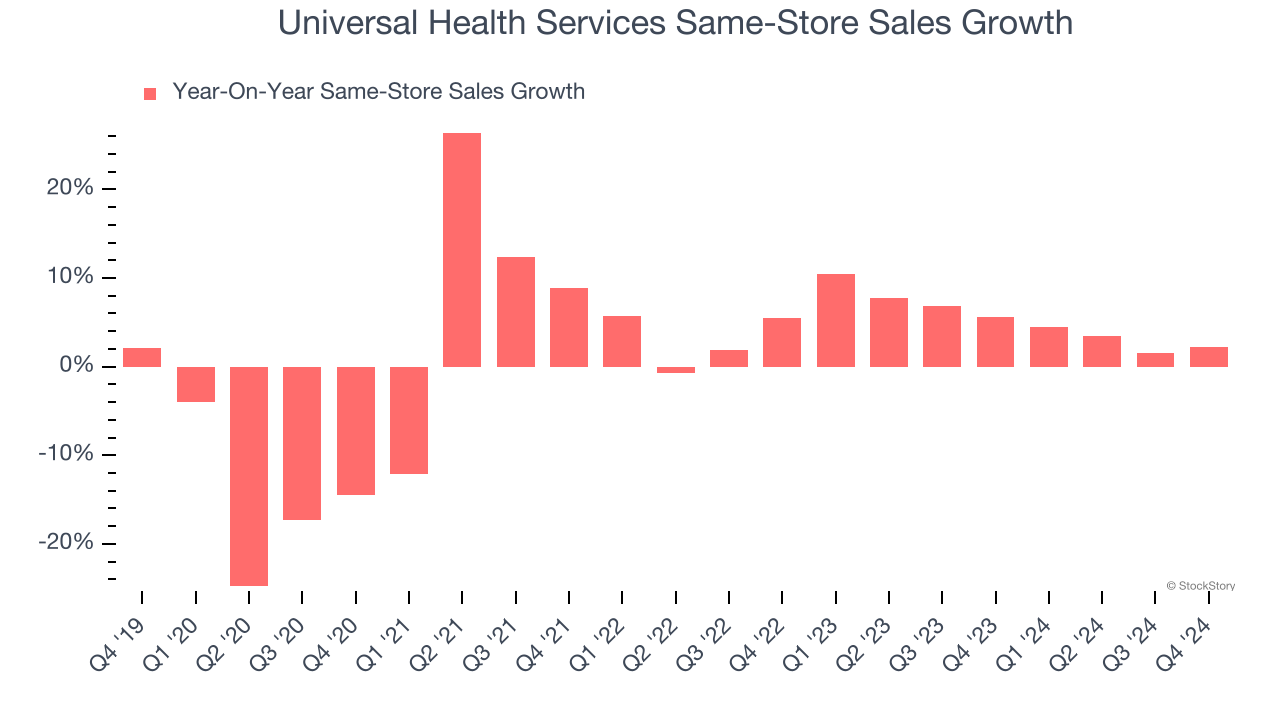
This quarter, Universal Health Services reported year-on-year revenue growth of 11.1%, and its $4.11 billion of revenue exceeded Wall Street’s estimates by 2.6%.
Looking ahead, sell-side analysts expect revenue to grow 5.6% over the next 12 months, a deceleration versus the last two years. We still think its growth trajectory is satisfactory given its scale and implies the market is baking in success for its products and services.
Software is eating the world and there is virtually no industry left that has been untouched by it. That drives increasing demand for tools helping software developers do their jobs, whether it be monitoring critical cloud infrastructure, integrating audio and video functionality, or ensuring smooth content streaming. Click here to access a free report on our 3 favorite stocks to play this generational megatrend.
Operating Margin
Universal Health Services was profitable over the last five years but held back by its large cost base. Its average operating margin of 9.7% was weak for a healthcare business.
Looking at the trend in its profitability, Universal Health Services’s operating margin decreased by 1.1 percentage points over the last five years, but it rose by 3.1 percentage points on a two-year basis. Still, shareholders will want to see Universal Health Services become more profitable in the future.
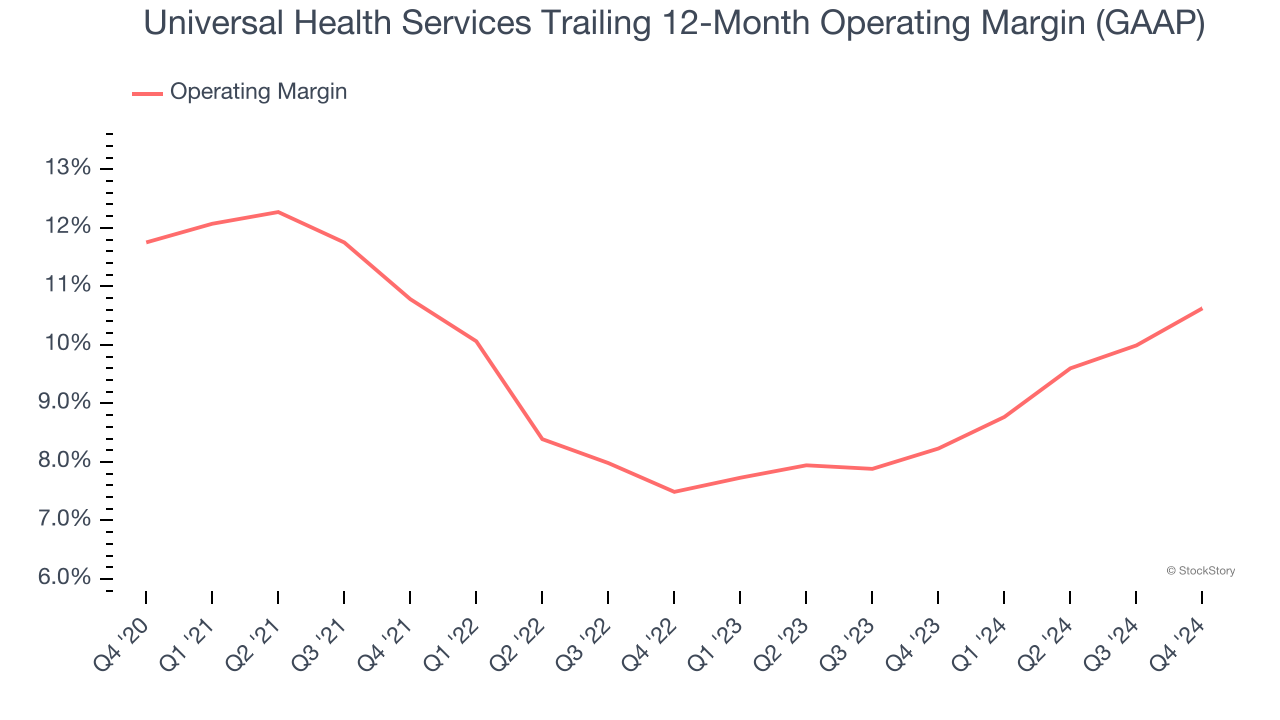
This quarter, Universal Health Services generated an operating profit margin of 11.5%, up 2.5 percentage points year on year. This increase was a welcome development and shows it was recently more efficient because its expenses grew slower than its revenue.
Earnings Per Share
Revenue trends explain a company’s historical growth, but the long-term change in earnings per share (EPS) points to the profitability of that growth – for example, a company could inflate its sales through excessive spending on advertising and promotions.
Universal Health Services’s EPS grew at a spectacular 13% compounded annual growth rate over the last five years, higher than its 6.8% annualized revenue growth. However, this alone doesn’t tell us much about its business quality because its operating margin didn’t expand.
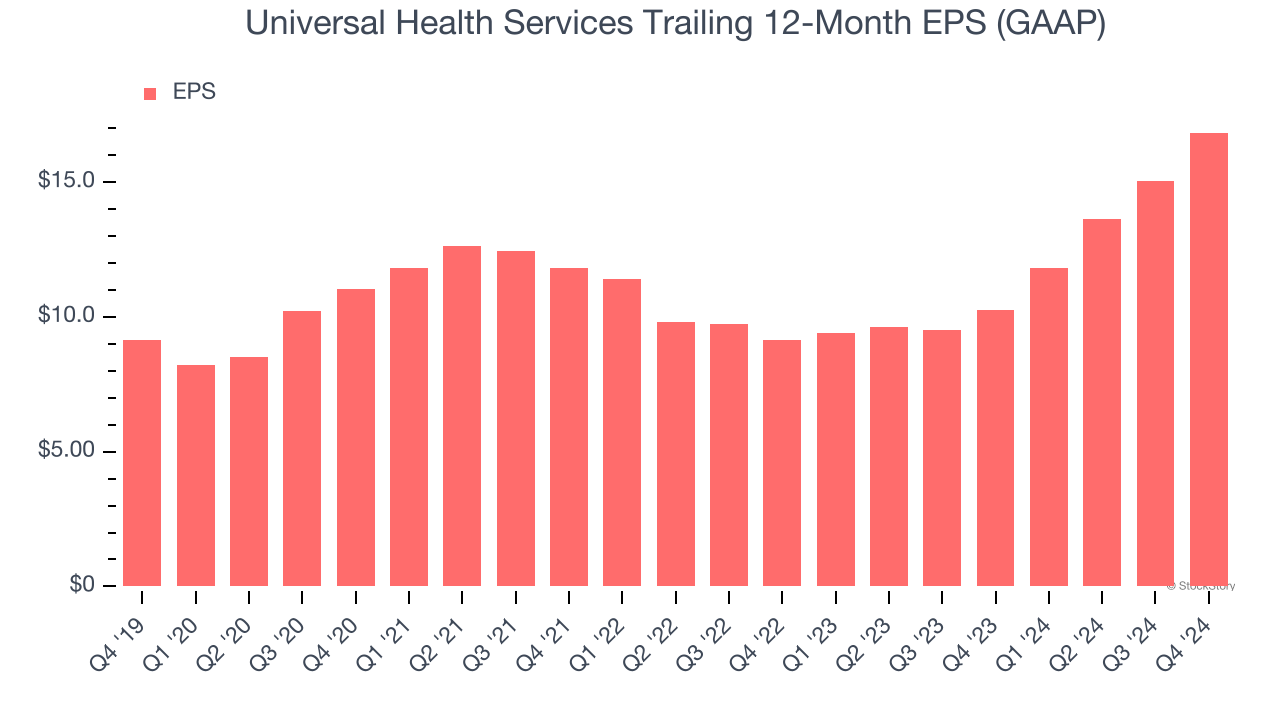
Diving into the nuances of Universal Health Services’s earnings can give us a better understanding of its performance. A five-year view shows that Universal Health Services has repurchased its stock, shrinking its share count by 23.4%. This tells us its EPS outperformed its revenue not because of increased operational efficiency but financial engineering, as buybacks boost per share earnings. 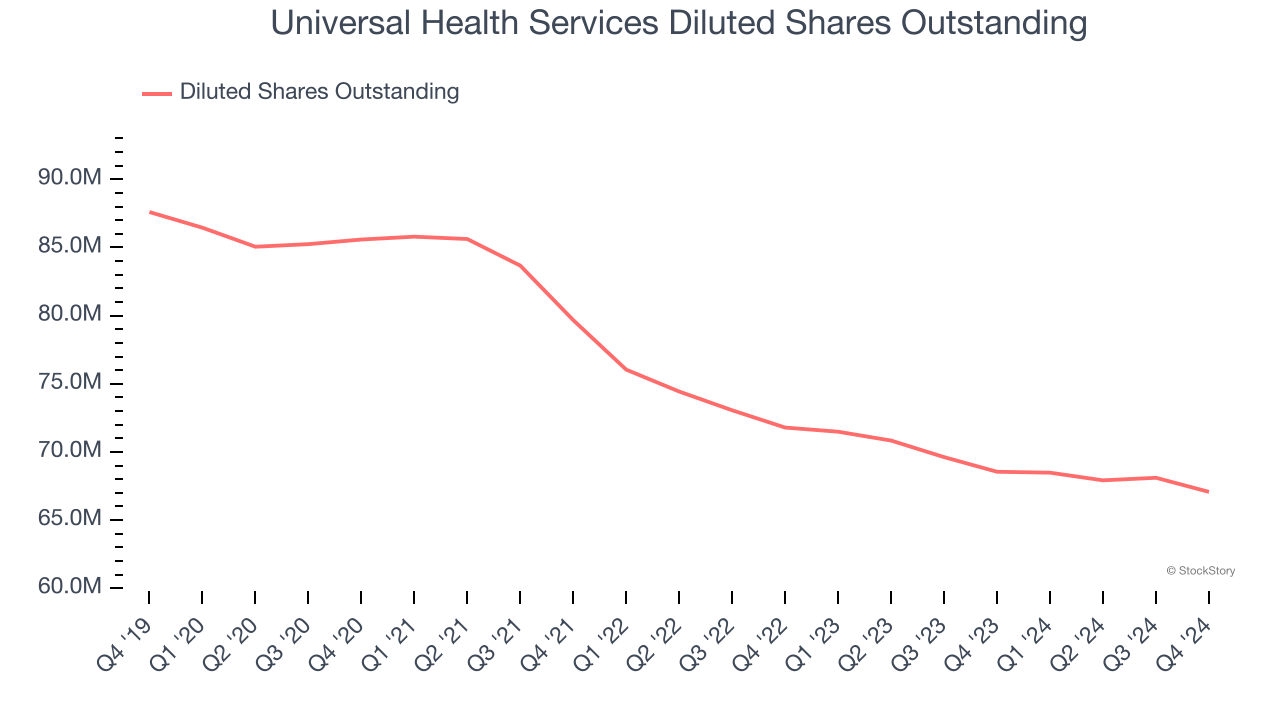
In Q4, Universal Health Services reported EPS at $4.96, up from $3.16 in the same quarter last year. This print easily cleared analysts’ estimates, and shareholders should be content with the results. Over the next 12 months, Wall Street expects Universal Health Services’s full-year EPS of $16.84 to grow 5.3%.
Key Takeaways from Universal Health Services’s Q4 Results
We were impressed by how significantly Universal Health Services blew past analysts’ revenue, EPS, and EBITDA expectations this quarter. We were also glad its full-year guidance for all three metrics exceeded Wall Street’s estimates. On the other hand, its same-store sales slightly missed. Still we think this was a good quarter with some key areas of upside. The stock traded up 4.3% to $187 immediately after reporting.
Universal Health Services may have had a good quarter, but does that mean you should invest right now? If you’re making that decision, you should consider the bigger picture of valuation, business qualities, as well as the latest earnings. We cover that in our actionable full research report which you can read here, it’s free.





